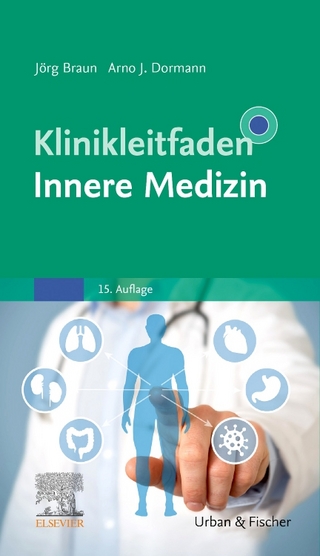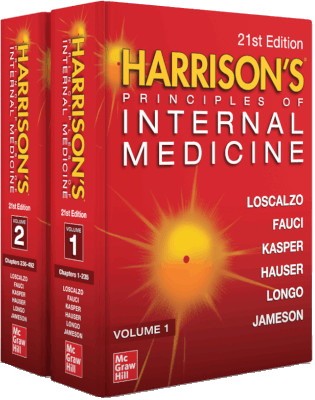
The Year in Endocrinology
Kluwer Academic/Plenum Publishers (Verlag)
978-0-306-32102-3 (ISBN)
- Titel ist leider vergriffen;
keine Neuauflage - Artikel merken
Louis Avioli to continue as a member of the Editorial Board. Most fortunately, however, we have persuaded Dr. Charles R. Kleeman to join the Board and to be responsible for the chapter on the parathyroid gland and mineral metabolism. Dr. Kleeman has been assisted on the preparation of this chapter by his daughter, Dr.
1 Hypothalamus.- 1.1. Hormones in Brain.- 1.1.1. "Gastrointestinal Peptides".- 1.1.1.1. Gastrin.- 1.1.1.2. Vasoactive Intestinal Polypeptide.- 1.1.1.3. Substance P.- 1.1.2. Neurotensin.- 1.1.3. Renin.- 1.1.4. Pituitarylike Peptides.- 1.1.4.1. ACTH, MSH, Growth Hormone, and Endorphin in Hypophysectomized Animals.- 1.1.4.2. ?-Lipotropin, Endorphin, and Enkephalin.- 1.2. Hormones in Pituitary Blood.- 1.2.1. Demonstration of Releasing Factors and Pituitary Hormones in Portal Blood: Newer Studies on the Pituitary Portal System.- 1.3. Factors Involved in Brain Androgenization.- 1.3.1. Sexual Dimorphism of Brain.- 1.3.2. Hormones Involved in Neonatal Androgenization.- 1.4. Melatonin.- 1.5. Clinical Neuroendocrinology.- 1.5.1. Endocrine Effects of Pituitary-Hypothalamic Irradiation for Nonpituitary or Hypothalamic Tumors.- 1.5.2. Selective Removal of Hypersecreting Pituitary Microadenomas.- 1.5.2.1. Theoretical and Pathological Considerations.- 1.5.2.2. Results of Treatment.- Addendum.- References.- 2 Anterior Pituitary.- 2.1. Introduction.- 2.2. Corticotropin-Related Peptides.- 2.2.1. Clinical Abnormalities.- 2.3 Thyrotropin.- 2.3.1. Regulation of Secretion.- 2.3.2. Pituitary Enlargement in Hypothyroidism.- 2.3.3. TSH Responses to TRH Testing.- 2.4. Gonadotropins.- 2.4.1. Heterogeneity and Subunit Characterization.- 2.4.2. Responses to LHRH.- 2.4.3. Disorders of Puberty.- 2.4.4. Gonadotropin-Secreting Tumors.- 2.4.5. Gonadotropins and Hypothalamic Diseases.- 2.5. Prolactin.- 2.5.1. Normal Physiology.- 2.5.2. Pharmacological Modification.- 2.5.3. Hyperprolactinemia Syndromes.- 2.5.4. Lactation.- 2.5.5. Prolactin Secretion in Nonpituitary Disease.- 2.6. Growth Hormone.- 2.6.1. Molecular Activation.- 2.6.2. Receptors.- 2.6.3. Placental Growth-Hormone-Like Peptides.- 2.6.4. Growth Hormone Effects.- 2.6.5. Pharmacological Modifications of Growth Hormone Secretion.- 2.6.6. Hypopituitarism.- 2.6.7. Growth Hormone Treatment.- 2.6.8. Acromegaly.- 2.7. Somatomedins.- References.- 3 The Thyroid.- 3.1. Introduction.- 3.2. Hypothalamic-Pituitary-Thyroid Interrelationships.- 3.3. Thyroid Hormones.- 3.3.1. Synthesis and Secretion.- 3.3.2. Peripheral Metabolism.- 3.4. Mechanisms of Thyroid Hormone Action.- 3.5. Clinical Thyroidology.- 3.5.1. Hyperthyroidism.- 3.5.2. Hypothyroidism.- 3.5.3. Thyroid Cancer.- 3.5.4. Miscellaneous.- References.- 4 Parathyroid Hormone and Calcitonin.- 4.1. Parathyroid Hormone.- 4.1.1. Introduction.- 4.1.2. Hormone Synthesis, Secretion, and Turnover.- 4.1.3. Physiological Role of Parathyroid Hormone.- 4.1.3.1. Calcium Homeostasis.- 4.1.3.2. Physiology of Bone.- 4.1.3.3. Parathyroid Hormone and the Skeleton.- 4.1.3.4. Parathyroid Hormone and the Kidney.- 4.1.3.5. An Integrated Model of Calcium Homeostasis.- 4.1.3.6. Parathyroid Hormone and Vitamin D.- 4.1.3.7. Nature of Active Parathyroid Hormone.- 4.1.3.8. A Wider Role for Parathyroid Hormone.- 4.1.4. Cellular Response to Parathyroid Hormone.- 4.1.5. Regulation of Hormone Synthesis and Secretion.- 4.1.5.1. Why Do Parathyroid Cells React to Calcium?.- 4.1.5.2. Is Hyperparathyroidism a Primary Mitochondrial Disease?.- 4.1.6. Hyperparathyroidism.- 4.1.6.1. Pathology of Classic Hyperparathyroidism.- 4.1.6.2. Clinical Presentation and Diagnosis.- 4.1.6.3. Surgery.- 4.1.6.4. Preoperative Localization of Pathological Glands.- 4.1.6.5. Renal Osteodystrophy.- 4.1.7. Hypoparathyroidism.- 4.1.7.1. Postsurgical Hypoparathyroidism.- 4.1.7.2. Hormone-Resistant Hypoparathyroidism.- 4.1.7.3. Treatment.- 4.1.7.4. Pancreatitis.- 4.1.8. Interactions of Parathyroid Hormone with Other Hormones.- 4.1.8.1. Thyroid Hormone.- 4.1.8.2. Growth Hormone and Somatostatin.- 4.1.8.3. Glucocorticoids.- 4.1.9. Hypercalcemia of Malignancy.- 4.2. Calcitonin.- 4.2.1. Introduction.- 4.2.2. Hormone Synthesis and Secretion.- 4.2.3. Physiological Role of Calcitonin in Mammals.- 4.2.4. Mechanism of Hormone Action.- 4.2.5. Multiple Endocrine Neoplasia.- 4.2.6. Calcitonin and Renal Failure.- 4.2.7. Paget's Disease.- 4.2.8. Calcitonin as a Tumor Marker.- References.- 5 The Adrenal Cortex.- 5.1. Introduction.- 5.2. ACTH: Structure and Function.- 5.2.1. "Big" ACTH and Related Peptides.- 5.2.2. ACTH1-39: Structure and Function.- 5.2.3. Ectopic ACTH.- 5.3. Cyclic Nucleotides in the Adrenal.- 5.3.1. Adenylate Cyclase.- 5.3.2. cAMP-Dependent Protein Kinase.- 5.4. Adrenal Metabolism.- 5.4.1. Steroidogenesis.- 5.4.2. Cholesterol Metabolism.- 5.4.3. Prostaglandins.- 5.5. Regulation of Normal Adrenal Growth.- 5.5.1. ACTH Regulation.- 5.5.2. Neural Regulation.- 5.6. Abnormal Adrenal Function.- 5.6.1. Tests of the Hypothalamic-Pituitary-Adrenal Axis.- 5.6.2. Pituitary-Dependent Cushing's Syndrome (Cushing's Disease).- 5.6.3. Nelson's Syndrome.- References.- 6 Aldosterone and the Renin-Angiotensin System.- 6.1. Introduction.- 6.2. The Renin-Angiotensin System.- 6.2.1. Angiotensin and Blood Pressure.- 6.2.1.1. Diagnostic Use of the Angiotensin II Inhibitor Saralasin.- 6.2.2. Hyporeninemic Hypoaldosteronism and "Abnormal" Renin.- 6.2.3. Bartter's Syndrome.- 6.3. Aldosterone and the Mineralocorticoid Hormones.- 6.3.1. Biosynthesis.- 6.3.2. Measurement of Plasma Deoxycorticosterone, 18-Hydroxydeoxycorticosterone, and 18-Hydroxycorticosterone Concentrations in Man.- 6.3.3. Low-Aldosterone Hypertension and Adrenal Hypertensive Steroids Other Than Aldosterone.- 6.3.4. Aldosterone Binding.- 6.3.5. Angiotensin III and Aldosterone Production.- References.- 7 Vasopressin and Water Metabolism.- 7.1. Introduction.- 7.2. Physiology.- 7.2.1. Osmoregulation.- 7.2.2. Baroregulation.- 7.2.3. Hormonoregulation.- 7.2.4. Interaction of Osmotic and Hemodynamic Stimuli.- 7.2.5. Nociceptive Influences.- 7.2.6. Other Stimuli.- 7.2.7. Neurophysin.- 7.3. Pathology.- 7.3.1. Diabetes Insipidus.- 7.3.2. Syndrome of Inappropriate Antidiuresis.- References.- 8 The Ovary.- 8.1. Secondary Amenorrhea.- 8.2. Hyperprolactinemic Amenorrhea.- 8.2.1. Etiology.- 8.2.2. Postpartum Amenorrhea.- 8.2.3. Treatment.- 8.2.4. Androgens.- 8.3. Post-Pill Amenorrhea.- 8.4. Polycystic Ovary Syndrome.- 8.4.1. Characterization.- 8.4.2. Wedge Resection.- 8.4.3. Ovarian Enzymes.- 8.5. Menstrual Cycle Progesterone.- 8.6. Estrogens and the Adrenal.- 8.7. Human Chorionic Gonadotropin.- 8.7.1. Structural Properties.- 8.7.2. Sialic Acid.- 8.7.3. Human Chorionic Gonadotropin in Pregnancy.- 8.7.4. Trophoblastic Neoplasms.- 8.7.5. Other Cancers.- 8.7.6. Universality of Human Chorionic Gonadotropin Production.- 8.7.7. Human Chorionic Gonadotropin and Fertility Control.- References.- 9 The Testis.- 9.1. Introduction.- 9.2. Intrauterine and Neonatal Function.- 9.2.1. Embryonic Sex Differentiation.- 9.2.1.1. Normal Controls.- 9.2.1.2. Defects in Testicular Function in Utero.- 9.2.2. Testicular Function in Childhood.- 9.3. Puberty.- 9.4. Adult Physiology.- 9.4.1. The Hypothalamus and Pituitary.- 9.4.2. The Testis.- 9.4.2.1. Steroidogenesis.- 9.4.2.2. Spermatogenesis.- 9.4.2.3. Effect of Age on Testicular Function.- 9.5. Adult Pathophysiology.- 9.5.1. Gonadotropin Deficiencies.- 9.5.2. The Testis.- 9.5.2.1. Steroidogenesis.- 9.5.2.2. Tubular Defects.- 9.6. Influence of Other Diseases on Testicular Function.- 9.7. The H-Y Antigen.- References.- 10 The Sympathoadrenal System.- 10.1. Introduction: Regulation of the Sympathoadrenal System.- 10.2. The Sympathoadrenal System and the Integration of Endocrine Responses.- 10.2.1. Background.- 10.2.2. Renin.- 10.2.2.1. Effects of Catecholamines on Renin Release.- 10.2.2.2. Physiological Role of Catecholamines in Stimulating Renin Release.- 10.2.3. Insulin and Glucagon.- 10.2.3.1. Effects of Catecholamines on Insulin and Glucagon Secretion.- 10.2.3.2. Physiological Role of Catecholamines in the Regulation of Insulin and Glucagon Secretion.- 10.2.4. Other Hormones.- 10.2.4.1. Thyroid Hormones.- 10.2.4.2. Gastrin.- 10.2.4.3. Calcitonin.- 10.2.4.4. Parathyroid Hormone.- 10.2.4.5. Erythropoietin.- 10.2.5. Hypothesis: Role of Catecholamines in the Integration of Endocrine Secretion.- 10.3. Catecholamines and Essential Hypertension.- 10.3.1. Background.- 10.3.2. Activity of the Sympathoadrenal System in Various Forms of Human and Experimental Hypertension.- 10.3.2.1. Animal Models of Hypertension.- 10.3.2.2. Indices of Sympathoadrenal Activity in Patients with Essential Hypertension.- 10.3.2.3. Features of Essential Hypertension Consistent with Increased Sympathetic Activity.- 10.3.3. Response to Treatment.- 10.3.4. Summary: Does the Sympathetic Nervous System Have a Primary Role in the Development of Essential Hypertension?.- 10.4. Update of Previously Reviewed Subjects.- 10.4.1. Catecholamines and Hyperthyroidism.- 10.4.1.1. Propranolol in Preparation for Thyroid Surgery.- 10.4.1.2. Thyroid Hormones and Sensitivity to Catecholamines.- 10.4.2. Pheochromocytoma in MEA Syndromes.- 10.4.3. Plasma Catecholamines.- 10.4.3.1. Upright Posture, Volume Depletion, Isometric Hand Grip, and Cigarette Smoking.- 10.4.3.2. Autonomic Neuropathies.- References.- 11 Autoimmunity in Endocrine Disease.- 11.1. Introduction.- 11.2. Basic Considerations.- 11.3. Autoimmunity and the Thyroid.- 11.3.1. Humoral Immunity in Thyroid Disease.- 11.3.2. Cell-Mediated Immunity in Thyroid Disease.- 11.3.3. Genetics of Graves' Disease and Hashimoto's Disease.- 11.3.4. Possible Role of Stress in the Induction of Hyperthyroidism.- 11.3.5. Remissions in Graves' Disease.- 11.3.6. Nature of the Ophthalmopathy.- 11.4. Autoimmunity and the Pancreas.- 11.5. Autoimmunity and the Adrenal.- 11.6. Autoimmunity and the Gonad.- 11.6.1. Autoimmune Oophoritis.- 11.6.2. Autoimmune Orchitis.- 11.6.3. Infertility.- 11.7. Autoimmunity and the Parathyroids.- 11.8. Autoimmunity and the Pituitary.- 11.9. Conclusions.- References.
| Zusatzinfo | biography |
|---|---|
| Sprache | englisch |
| Themenwelt | Medizinische Fachgebiete ► Innere Medizin ► Diabetologie |
| Medizinische Fachgebiete ► Innere Medizin ► Endokrinologie | |
| Studium ► 1. Studienabschnitt (Vorklinik) ► Biochemie / Molekularbiologie | |
| ISBN-10 | 0-306-32102-5 / 0306321025 |
| ISBN-13 | 978-0-306-32102-3 / 9780306321023 |
| Zustand | Neuware |
| Haben Sie eine Frage zum Produkt? |
aus dem Bereich


